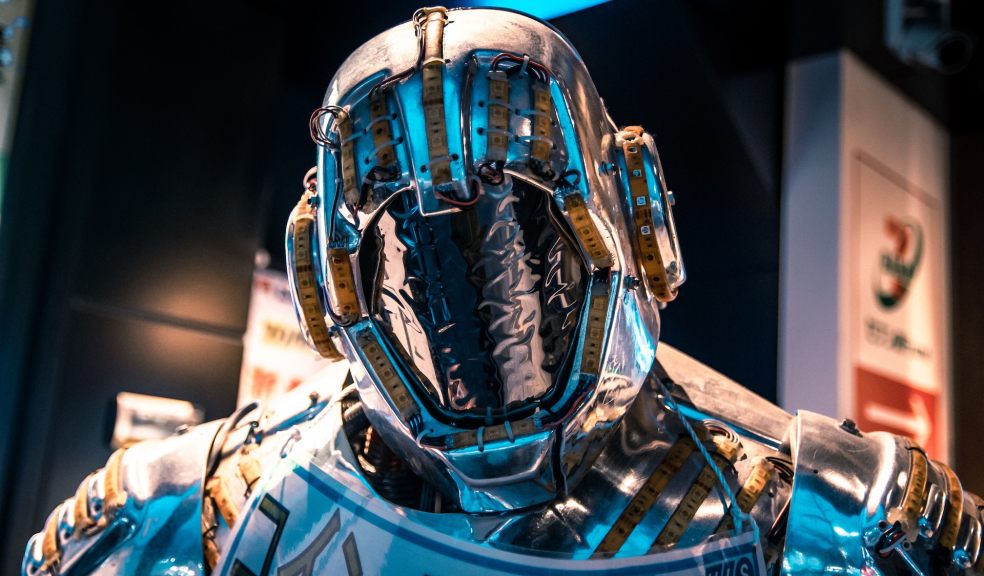
The AI-powered Robot that Can Help You Create an Artistic Masterpiece
Have you ever dreamed of creating your own art masterpiece but felt overwhelmed by the process of bringing your vision to life?
Meet FRIDA, the AI-powered robot that can help you unlock your inner artist and create stunning works of art. Operating as a bionic arm that follows in-built algorithms to come up with original work, it’s causing a big debate across the art world about the merits of using the bot.
In this article, we'll explore whether FRIDA is set to revolutionize the art world, or just simply be another overblown tech aid that doesn’t live up to human talent.
The next level of AI
ChatGPT may be dominating the headlines right now, but Artificial Intelligence has been part of our lives for a while now.
In the world of automation, AI-powered bots have assisted car manufacturing for some time, helping to supply and assemble vehicle parts. We might be subject to AI in our leisure time, too. Enter any of the gambling sites on a list of best online casinos for UK 2023, for example, and the operator could be using AI to identify unhealthy betting patterns that might lead to them flagging it up to you with an email or notification.
What we’ve seen in 2023, though, represents a big advance in the use of this innovative tech, and FRIDA is a prime example of that.
ChatGPT, the disruptive tool that’s doing a lot of the basic work tasks that drive the digital world, is making waves and showing just how effective AI can be, even if it does have a lot of people fearing for their jobs.
A slightly more sinister use case is Synthesia, an AI video generator that can produce scarily life-like videos of presenters reading out your text or, as one journalist did, make a clone of yourself speaking.
There have also been reports that the Venezuelan government has used the software to create ultra-realistic propaganda videos, which is a worrying sign of what may be to come.
Yet there has also been a trend of AI bots created for practical purposes, like FRIDA. Is this machine the real deal, or are artists’ livelihoods safe for a good while yet?
What FRIDA can do
FRIDA is a Carnegie Mellon University project named after famous Mexican painter Frida Kahlo. It uses AI models that already produce caption images and understand scenic content and applies them to generative art.
Technicians have spent considerable time inputting existing images and text descriptions into its database to see what the robot is actually capable of. The bot can then produce images with a mechanical arm, according to the input instructions.
The results have been surprising.
FRIDA can fairly accurately reproduce famous paintings from the likes of Vincent Van Gogh and Andy Warhol. It gets the colors and texture just right, so you can appreciate the effort the bots have gone through.
In short, it’s rather like a talented high school student’s representation, which is no mean feat.
The argument for FRIDA
FRIDA’s makers point out that the bot can produce art that is consistent in quality and style, which can be certain things like creating branded graphics or generating images for scientific research.
It also may produce unique art that humans may not have thought of. This could be particularly useful for generating designs or exploring new artistic styles.
FRIDA is also a fun plaything for people getting used to art. As the ultimate collaboration tool, it could even be a utensil for people learning how to paint or draw, a kind of mechanical beginner’s art guide almost.
In short, there’s a lot for established and beginner artists to gain here, but what about the potential drawbacks?
The argument against FRIDA
Anyone thinking FRIDA can knock out a piece of art in minutes is sadly mistaken. Typical painting times are several hours depending on the complexity of the piece, although this could still be quicker than many human artists.
Interestingly, FRIDA is built to allow for mistakes. Perhaps knowing that art is a famously imprecise process, the bot’s makers have avoided the robotic desire to get things as accurate as possible. However, it does mean that things can go wrong every now and then, and a masterpiece ends up looking more like a piece of junk.
There’s also the big question of just how much depth there can be to any AI-generated art, a topic which has caused much consternation among human artists. An AI bot lacks the emotional and intuitive understanding that humans bring to their work, which can result in art that feels sterile.
AI-powered tools like Portrait Pal are transforming the art world by enabling users to create stunning artistic masterpieces with ease.
Are AI artists about to replace humans?
The short answer to this has to be ‘no’. Anyone interested in buying an art piece isn’t going to want something mechanically produced: they buy it for the human perspective that every art piece offers, some more interestingly than others.
While bots like FRIDA certainly have their uses for more logic-based work, like graphic design and brainstorming, they have a long way to go before they can replicate the nuance and complexities that come with being a human being.

















